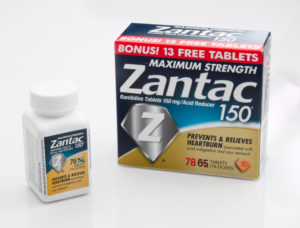Opioids, Pain Management and LTC
It is estimated that as many as 80 percent of residents in long-term care facilities suffer from at least one condition associated with pain. Unfortunately, there are often barriers to the recognition and treatment of pain in the LTC setting associated with the nature of pain and societal attitudes towards pain. AMDA–Dedicated to Long Term Care MedicineTM, has noted in its Clinical Practice Guideline on Pain Management in the Long Term Care Setting many of the myths that persist about pain in the elderly population, including:
- Pain is an inevitable part of aging, and nothing can be done about it.
- Elderly patients, especially those who are cognitively impaired, have a higher tolerance for pain.
- Elderly patients and people who are cognitively impaired cannot be accurately assessed for pain.
- Patients say they are in pain to get attention.
- The patient “doesn’t look like” he or she is pain and therefore is probably not really in pain.
- The patient’s vital signs are normal, so he or she must not be in significant pain.
- Elderly patients are likely to become addicted to pain medications
- To acknowledge pain is a sign of personal weakness. (Conversely, to bear pain without complaint denotes strength of character.)
- Pain is a punishment for past actions.
- Acknowledging pain will mean undergoing intrusive and possibly painful tests.
- Acknowledging pain will lead to a loss of independence.
- Pain means death is near.
- Pain always indicates the presence of a serious disease.
- Use of opioids is the only effective means for treatment of significant pain.
Just as myths exist about pain in the elderly population, so do the complexities regarding the appropriate use of opioids, a type of narcotic pain medication (which includes drugs, such as morphine and oxycodone) because of the risk of serious side effects if not used correctly, including addiction and abuse. In July 2012, the Food and Drug Administration (FDA) approved a Risk Evaluation and Mitigation Strategy for extended-release and long-acting opioids that included voluntary prescriber training, although the agency said it would like to make the training mandatory by linking it to Drug Administration Enforcement registration.
To fully understand the challenges of managing pain in the LTC setting and debunk the myths associated with treating pain, experts in the field of pain management, geriatrics and long-term care medical direction were asked the following two questions:
1. Do you think opioids are over prescribed in long-term care?
2. What is your choice for pain management to treat chronic non-cancer pain?
Their comments:
"Chronic non-cancer pain in long-term care is most often found to be undertreated, but overtreatment is also possible. LTC providers should refer to AMDA’s Clinical Practice Guideline on Pain Management for excellent advice on recognizing, assessing and treating pain in the long term care setting. The AMDA guidline emphasizes that when managing pain, it is always important to assess the patient for causes of pain and plan treatment using both non-pharmacologic and pharmacologic interventions. One should work with the patient and together decide goals of therapy, weighing the pros and cons of each pain management option, including opioid therapy. Typically, the goals of pain treatment are to alleviate suffering and to maximize functioning and independence.
"With elderly patients, there are practical limitations when managing pain with medications. NSAIDs are generally not appropriate because of adverse cardiac, gastrointestinal and renal effects. My first tier of treatment includes physical therapy, topical lidocaine cream and acetaminophen. My next step is to add tramadol, and if that is ineffective, then opioids can be substituted for tramadol.
"Opioids can be quite beneficial when prescribed appropriately and dosed judiciously, but they do have potential adverse effects such as confusion and constipation. While many prescribers are concerned about the potential for opioid diversion, most long-term care facilities have the ability to store opioids securely and monitor appropriate administration. Opioid abuse and addiction are also possible, but these issues are less common in the LTC setting, can be detected clinically and should not deter providers from providing appropriate pain relief."
William D. Smucker, MD, CMD
Faculty, Summa Health System Family Medicine Residency, Akron, Ohio
Medical Director, Altenheim Nursing Home, Strongsville, Ohio
"I do not think that opioids are overprescribed in long-term care. Pain is a very individual issue and like many clinical problems there are no perfect solutions. Treatments for pain with any pharmaceutical intervention have some side effects and there are older individuals in long-term care that make choices to avoid the medications and manage their pain in their own way (e.g., positioning, etc). Others, require and want treatment that helps decrease the pain sensations. I think we would benefit from combining more behavioral interventions to help some types of pain (e.g., physical activity for musculoskeletal issues) and hope that we will continue to motivate individuals in these settings to do that. There are some LTC facilities that may have patients with long histories of drug addictions and those situations are different and bring in a new challenge for LTC settings. I would not call this overprescribing, however.
"My first choices are behavioral interventions, physical activity and positioning. In addition, I often try topical compounds that contain a combination of anti-inflammatory and pain relieving drugs. At the same time, I routinely encourage the use of [acetaminophen]. I generally avoid nonsteroidal agents because of the comorbidities commonly noted in the residents I see (e.g., renal disease, gastrointestinal problems). I will use narcotics as appropriate when these options are not effective. I start, of course, with very low dosages and increase as needed and if the individual can tolerate the treatment.
- Barbara Resnick, PhD, CRNP, FAAN,FAANP
Professor, University of Maryland School of Nursing, Baltimore, Md.
Clinical Care, Roland Park Place CCRC, Baltimore, Md.
"I think there are two extremes that exist in opioid prescribing in the nursing home. With all due respect to practitioners in the nursing home, some tend to underprescribe for fear of retribution by the DEA, yet also overprescribe in many cases when other cheaper and simpler options are available—such as using acetaminophen first and then moving to stronger meds, including short-term NSAIDs and then short-acting and long- acting opioids. Since they are generally anticholinergic, opioids cause sedation resulting in falls and hypotension, as well as other side effects. Then there is the issue of the need to write out prescriptions per DEA regulation, which hand ties clinicians in nursing homes and complicates the issue when they are necessary, resulting in delayed administration. Other physicians who spend a lot of time in long-term care do certainly prescribe appropriately as they are more likely to be familiar with the guidelines below.
"The best answer is to follow the Pain Management in the Long Term Care Setting Clinical Practice Guideline published by AMDA."
- Charles A. Cefalu, MD, MS
Professor and Chief of Geriatrics, Department of Medicine,
Louisiana State University Health Sciences Center, New Orleans, La.
Medical Director, LSU Affiliated Nursing Homes, New Orleans, La.
Chair, Clinical Practice Committee, AMDA
When it comes to effective pain management in long-term care, the comfort and well-being of patients should always be the first priority. Recognizing the need for individualized, patient-centered care planning helps to ensure that pain management is customized to each patient’s circumstances, conditions, needs and risk factors.
AMDA’s Clinical Practice Guideline on Pain Management in the Long Term Care Setting outlines many of the myths and misperceptions about pain and discusses the barriers to effective pain management, offering steps for overcoming these barriers. Appendix C in the new MDS Manual references the AMDA CPGs, as does the CMS State Operations Manual. To help you implement this clinical practice guideline in your facility, AMDA has created the Pain Management Tool Kit. Additionally, AMDA has recently published the Multidisciplinary Medication Management Manual, which provides practitioners in long-term care with information and tools to help them improve patient care, enhance medication management, and reduce medication errors. These and other resources can be found at www.amda.com/resources.
Krista Das is the Director of Marketing & Communications at AMDA–Dedicated to Long Term Care MedicineTM. She can be reached at kdas@amda.com. AMDA is the national professional association of medical directors, attending physicians and other professionals practicing in long-term care and is committed to the continuous improvement of patient care. AMDA provides education, advocacy, information and professional development to enable its members to deliver quality long-term care.
I Advance Senior Care is the industry-leading source for practical, in-depth, business-building, and resident care information for owners, executives, administrators, and directors of nursing at assisted living communities, skilled nursing facilities, post-acute facilities, and continuing care retirement communities. The I Advance Senior Care editorial team and industry experts provide market analysis, strategic direction, policy commentary, clinical best-practices, business management, and technology breakthroughs.
I Advance Senior Care is part of the Institute for the Advancement of Senior Care and published by Plain-English Health Care.
Related Articles
Topics: Articles , Clinical











